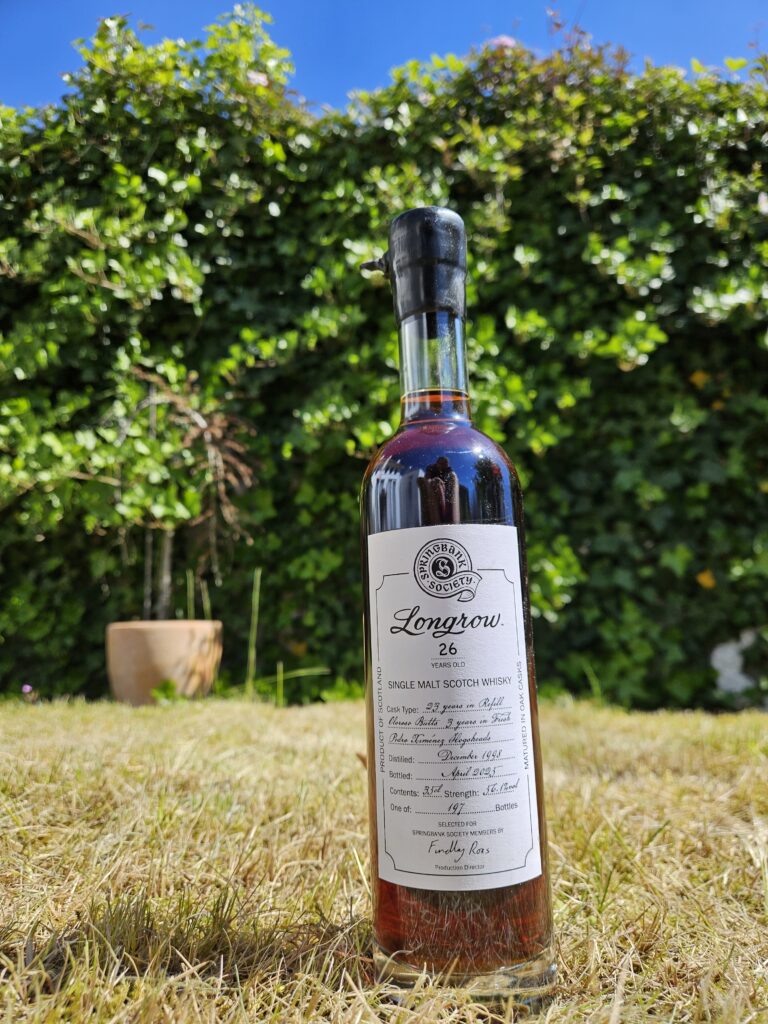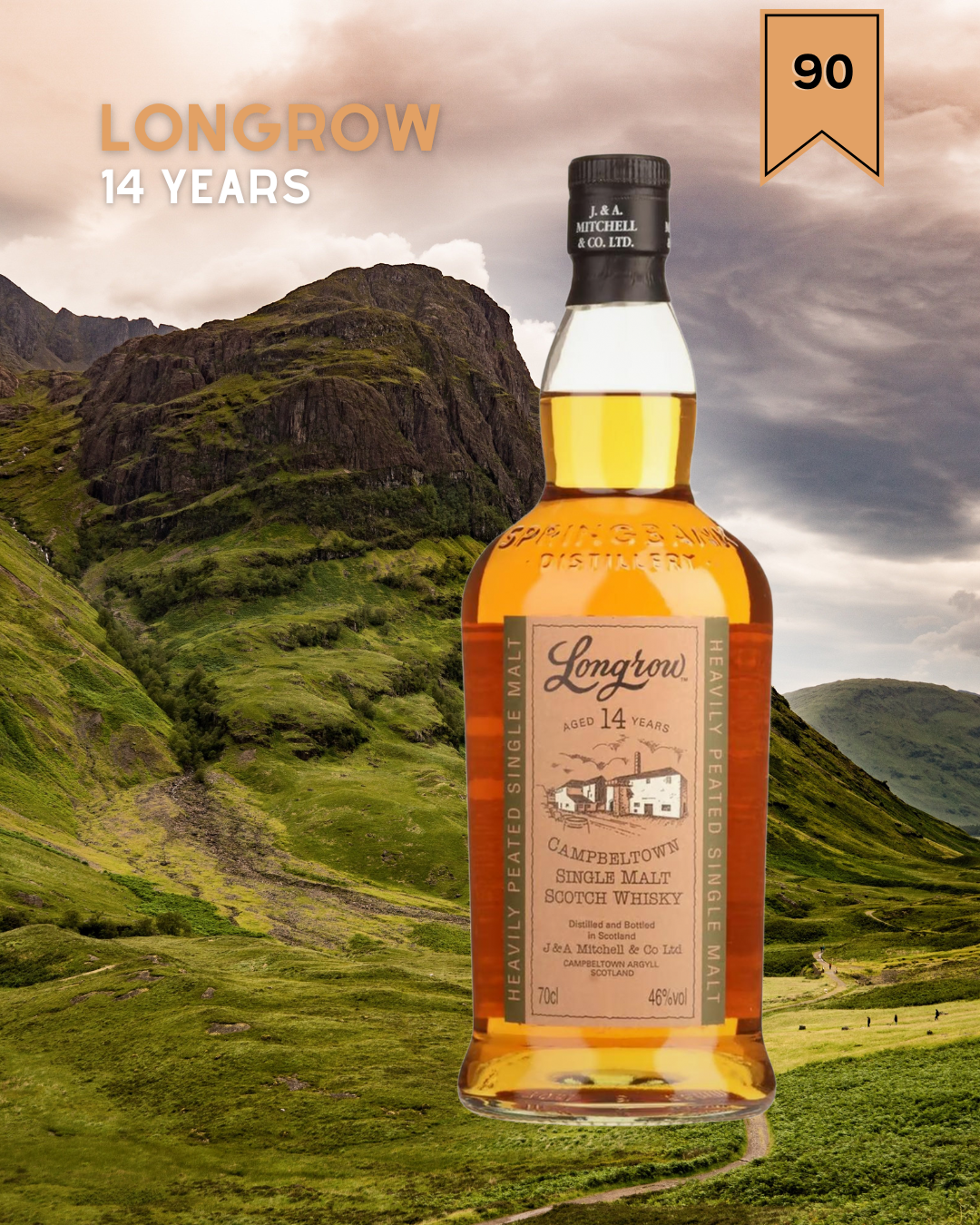Make Longrow Great Again! Some
musings and tastings
The Campbeltown Malts Festival has begun and I know this will delight many of my whisky drinking friends. In fact, I know quite a few who slept with the complete itinerary of the festival under their pillow ever since it came out late January. More power to them! Purely coincidental, my monthly Campbeltown Wednesday falls right in this festival week, so you get another blog tomorrow. For today, I fitted in an oldie and a very new one, both from Longrow.
The older one I managed to buy against a competitive price on auction. The Longrow 14 years old in the distinctly green box was and is, for many fans, one of the ultimate core expressions of the peated whisky made at Springbank Distillery. Be it the more dirty, sherry influenced early batch that we taste today, or the more bourbon forward expressions of later years, all hail the Longrow 14 as a perfectly balanced, bratty Campbeltown peater.


The new version is a spectacular release for Springbank Society members: the oldest ever official Longrow peated Campbeltown single malt, at 26 years old. I am very grateful for my friend Erik, who opened his bottle and shared samples from it (against payment, obviously). Now we can present you with a tasting note already.
Last January, when doing a week of debauchery with the Springbank Stallions, we got some insider intel on what is to be done with Longrow. To be totally honest, it did not really make me happy. Making a long story short, it comes down to the fact that stock management was never really a priority at the distillery. This already led to the fans being deprived of a standard 10 years old, let alone the beautiful 10 years old 100 proof in the red box. Those years are long past, but still these expressions pop up regularly in talks about the awesome heritage Longrow build up between 1995 and 2015. Oh, and I am not saying the current NAS Longrow “Peated” is subpar whisky, not in the slightest, but it does miss some of the sheer power and cockiness that was such a signature for the Longrow character.
Fans found their way to alternatives, of course, be it from the Cage in the distillery shop to a decent amount of single casks released in all kinds of markets across the world. But this automatically also thins the herd, since not everybody is in the position to travel to Campbeltown, or afford the pricing of more exclusive Longrow expressions, if you can find it at all that is. So yeah, for such an iconic brand, Longrow is in dire need of some more TLC. The signs ahead are bright. The (by some) dreaded Longrow RED series is cancelled and replaced by the Longrow 100 proof. Batch 01 still has some red wine casks in the mix, but let us hope and pray these will quickly be phased out. We have a blog planned for next month. Anyway, the team at Springbank has a great love for bourbon driven single malts, I hope available stock will soon allow them to start playing around with that. Make Longrow Great Again! Put it on a cap!

Longrow 14 years old, bottled at 46 % bv
First things first: Bottled in October 2004, making this one of (if not) the first batches of a more mature Longrow. Story has it that this first batch was a mixture of sherry and bourbon casks. My green Longrow box came with a leaflet to buy bottles from the first six cask filled with Glengyle spirit, of which “production started in April 2004”.

Upon Sipping: Wow, this is a nose that is very reminiscent of mature (manure?) Brora. I live in a suburb that borders on farmland, and when spring is in the air, the John Deere machines ride out and yaw the land, before they inject the freshly ground earth with the contents of the fertiliser tank. And then the hot but moist spring evening air does the rest. That is exactly how this Longrow 14 years old smells. When you get through that, some orange fruity notes do emerge, which is a miracle after the earthy, peaty assault. Muddy oranges and salty sea air make for an improbable combination, but this Campbeltown single malt pulls it off.
The taste is a bit more difficult. The farmy notes remain, mostly mid palate and on the finish. On the front of the tongue, there is a hint of iron. Given time to breathe a little, that note does disappear, being replaced by brine. A dry, grainy note brings back the element of farmland. If you put in a little splash of water, you will notice the lemons from the peated part of this Longrow start to take over. Soft citrus notes please the nostrils, while the palate is more close to Springbank now. I wonder if the peating levels changed over the years, because even though there is enough of it in this expression, I have a feeling it was much more fierce in later expressions of Longrow.
Word to the Wise: You know the saying: distilling is a game best played by farmers, and this Longrow is testament to that notion. With Springbank being so close to local farmers these days, I believe the future is set for more excellent releases. It would not hurt at all to take this fine specimen as an inspiration. Mentally it is enormously satisfying, technically this Longrow loses some points on the palate, making the score a nice rounded number.
Score: 90 points.

Longrow 26 years old, vintage 1998, bottled at 56,1 % abv
First things first: Would you look at that abv? Impressive. This 1998 Longrow was matured in refill oloroso butts for 23 years, before being transferred to fresh PX hogsheads for an extra 3 years. This resulted in 485 regular size bottles (and 197 bottles of 35 cl). Bottled for the Springbank Society.
Upon Sipping: Darker than dark, with only the slightest golden hue through it. Like discovering a gold vein in a mountain. The nose is impressively dark as well, with damp warehouse that has not seen daylight in a generation or two. Slight hints of cow dung, a little sulphur and lots and lots of exotic spices of which I do not know the name. After some moments, the more fruity side emerges, but do not expect a bright pie here, this is a red velvet / chocolate combination on a smoky plate. Quite an interesting clash between the oloroso basis and the PX-dessert that was served after the initial maturation. It begs the question: why did they decide to finish this Longrow? Was some enhancement needed? I like the leather on this muscled Longrow.
The sweet attack of the PX is prominent from the start, and one cannot not think of the Springbank PX in the sherry series. Incredibly overpowering, and when you look at the cask makeup, that Springbank was also finished for three years. The same recipe then, with the big difference of course being that there was a 23 years old oloroso matured Longrow to work with. The result is a sherry monster without any nuance.
The syrupy sweet and beautifully honeyed mouthfeel leaves little room for the peated character of Longrow, but it is there, and mostly gives off a dry, leathery experience, that continues well down on the finish. There, we also battle a strong spike of wood and chocolate. With just a drop of water, you enhance the chocolatey notes but also find some interesting honeyed notes. The finish packs a good punch!
Word to the Wise: This is excellent stuff, that is good to have in the glass while violently discussing with your mates if this is a good sherried whisky where the content happened to come from Longrow, or if this is a good Longrow that has stood up against Godzilla-like sherry casks. My conclusion leans towards the first, not the latter. A-typical Longrow of course fits the bill perfectly when you bottle for the Springbank Society. Mission accomplished.
Score: 91 points.


Geef een reactie